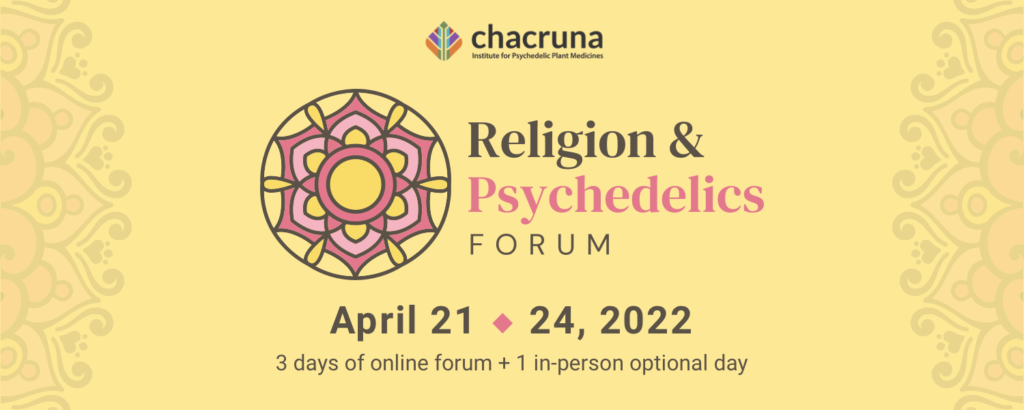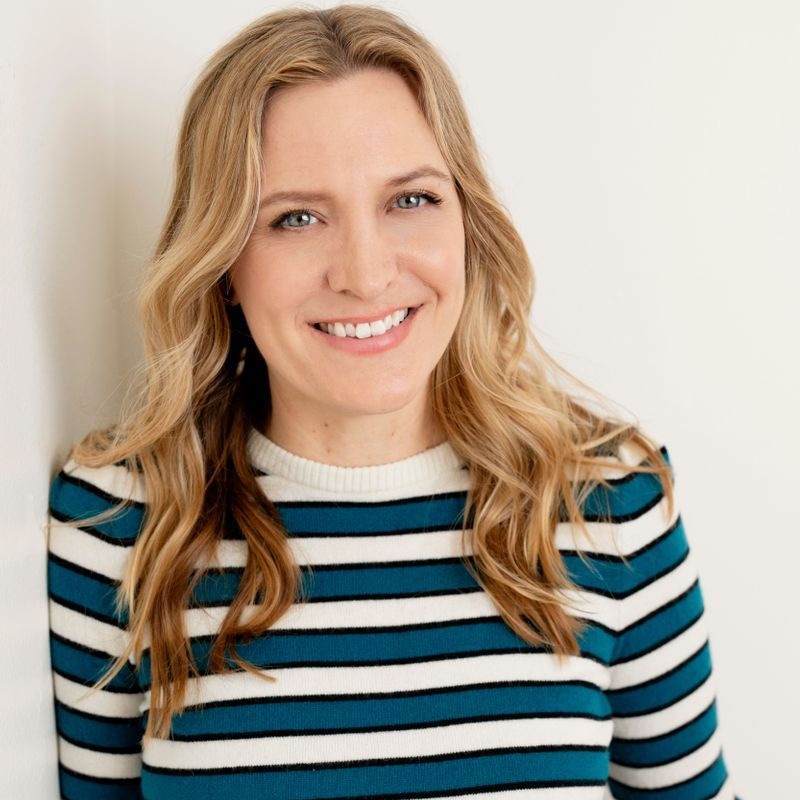
Dr. Emily Willow made it her mission to further the psychedelic renaissance through education. She teaches about the vast history of human beings’ use of psychedelics at the California Institute of Integral Studies (CIIS), and she posts regularly about harm reduction, integration, and other important topics for her thousands of Instagram followers. Her work with MDMA-assisted therapy has been featured on Goop and in the MAPS Bulletin, and an in-depth interview with her has been featured on Psychedelic Support.
As a psychiatrist, researcher, and educator, Dr. Willow keeps her plate full as she fulfills her mission. Her broad perspective on psychedelics helps us understand the unfolding psychedelic renaissance in a much broader context, encouraging us to incorporate wisdom from the past into current practices and develop policies for an inclusive and informed approach to healing.
In this interview, Emily Willow elaborates on her subjects of focus as a teacher, her approaches to integration, her viewpoint on recreational psychedelic use, and important pieces of psychedelic history that are missing from the current psychedelic landscape.
Sean Lawlor: I would hear more about your work as an adjunct faculty member at CIIS.
Emily Willow: I teach in the Philosophy, Cosmology, and Consciousness program, in the School of Consciousness and Transformation. The course I teach is titled “Psychedelic Medicine: Past, Present, Future.” It’s a discussion-based course. We use the history of humans changing consciousness over time as a backbone to discuss diverse topics related to psychedelic medicines. We talk about cultural appropriation. We talk about current issues with the constraints of clinical psychedelic use and ways that recreational use might be more accessible to some. When we’re talking about the first wave of psychedelic medicine in the West in the 50s and 60s, I have my students read the chapter from Michael Pollan’s book, How to Change Your Mind, that gets into the concept of popularism versus elitism. Do we, as a strategy for propagating psychedelic medicine, focus on popularism like Timothy Leary, where anyone and everyone gets psychedelics? Or do we focus on giving it to a select number of people in power positions, like Al Hubbard believed? And how does that shape policy?
We compare those things, and then we think about what a post-legalization future looks like. Those are some of the highlights that we delve into.
SL: Could you say more about how you’re looking at the history of humans changing consciousness over time?
EW: We really just look at an overview timeline. We have lots of archaeological evidence of consciousness alteration—I even wanted to incorporate caffeine and chocolate. We can theorize what people were doing, such as the possible use of ergot in ancient Greece. Those sorts of things are interesting to think and talk about. One of the topics that we bring up in that first unit of the deep history is, “How did humans using psychedelics or altering their consciousness generally impact our evolution?” We bring in Terence McKenna’s “Stoned Ape Theory” and things like that. And there’s evidence in the Vedic texts that maybe some psychedelic was used in ancient Hinduism. So, we bring in some of those theories and look at them from a lens of, “How did that impact us as humans?”
SL: So you’re going back way further than this psychedelic renaissance, way further even than the beginning of psychedelic history in the West?
EW: Yes, because I think it’s really important to contextualize what we’re doing now. It’s really easy to have an acid experience at a festival and to get really excited about where psychedelic medicine is from a clinical research perspective. But we’ve been doing this as humans for probably thousands of years. There’s a really rich history there with a lot of wisdom, and it would be a shame not to include that in the conversation, at the very least. But looking to the future, how do we incorporate all of these things together?

Join us for our next conference!
SL: So, it would be a shame to see this rich history and not incorporate some of the wisdom into what we’re doing here and now. Do you have any examples of a specific trend of the vaster history of psychedelic use that we’re not seeing reflected in this psychedelic renaissance?
EW: That’s a really good question. The thing that jumps to mind is community. Part of this deeper history of using psychedelics is that it’s done in the context of living in community and living more closely. That’s something that I’ve heard as feedback from participants in the clinical research studies: they go through this experience, and one of the first things that they want to know is, “Who can I connect with who’s also been through this process?” It’s hard because it’s a clinical trial, and there are constraints to that. Support groups have formed, which helps. But I think that’s one of the important pieces missing from this. Like, you’ve had this transformative experience, and our impulse as humans is to share it and to be seen in it.
“PART OF THIS DEEPER HISTORY OF USING PSYCHEDELICS IS THAT IT’S DONE IN THE CONTEXT OF LIVING IN COMMUNITY AND LIVING MORE CLOSELY.”
Emily Willow
SL: That gets me thinking about integration. Could you speak to the role of community and connection in the integration process?
EW: I think community is foundational for the process of integration. In some ways, community is what keeps us honest with ourselves. It’s easy to make a plan or set a goal, but when we’re in community and we’re sharing, we’re talking about what we want for ourselves. It’s like the concept of the buddy system, in that we’re keeping each other accountable. It’s a support system. In communities or areas like the Bay Area where I live where there’s more of a psychedelic community, it’s easier to find that. But in other areas of the country and the world where there’s less prominent of a psychedelic culture, community can be a really important place for support, even if it’s something like the small integration groups that are popping up everywhere. Different cities are having psychedelic societies popping up, and some of the decriminalize psychedelics movements are also involved in that from a policy perspective and making psychedelic use feel a little more acceptable.
When you have community, integration groups, and policy reform initiatives, it feels a little more okay to engage in this healing process with yourself.
SL: That brings up the subject of safety. How do you work with people who have a big, profound psychedelic experience, but the context they return to lacks safety and community?
EW: That’s a really big challenge. There’s not a straightforward answer. On one end of the spectrum, for anyone who’s not in a safe situation, such as an abusive relationship, that situation makes it difficult to heal and to move forward. But I think from the perspective of an individual using psychedelics, I try to work within the constraints of where we are in this pre-legalization moment. There are harm reduction tips that that I can give to keep yourself safe—like, if you live alone, have a friend or support person with you when you’re journeying, if for no other reason but to make sure that no one comes to the door. Things like that that create more safety.
As a psychiatrist, having a general approach of harm reduction is helpful because a lot of people don’t feel comfortable sharing about their psychedelic use. For me, really holding the banner of harm reduction from the beginning and saying, “This is a safe space. You can talk to me about the things that you’re doing, and I’m not going to judge you or tell you that it’s bad for you. We can work together on this”—that really makes a difference because there’s such a stigma about psychedelics, and drug use more widely.

Discover the Indigenous Reciprocity Initiative of the Americas
SL: You’ve alluded to recreational use a couple of times. I feel concerned in the current landscape that though there’s an opening around the medical and mental health approaches to psychedelics, there’s still a perpetuating of recreational stigmas. Do you have any thoughts on recreational use that you would like to share?
EW: I feel really strongly that we need both sides to move forward. I think recreational psychedelics may be equally as important as clinical psychedelic medicine, because it allows access for different groups of people.
I’ve had people come to me specifically because I’m a psychiatrist who trained at UCSF, and they want to do ketamine therapy with me because they feel safe in that medical container. Even though I can meet patients in a wide range of places, some people only feel safe in a medical setting.
On the other side, I think that recreational psychedelics—really, legalization of psychedelic medicine—is important, because it allows access for people who may not have a mental health condition. I think it’s our right as humans to be able to explore our own consciousness and to use tools that can help that. I think decriminalization and legalization of psychedelic medicines is in service of that movement.
SL: I really appreciate that you’re willing to touch on that. I want to ask you about your work with ketamine and integration. In an Instagram post, you wrote that integration is “the way we translate symbolic material into concrete actions for personal betterment and healing.” Would you be willing to expound on the part about translating symbolic material?
EW: My point in using that phrasing is to highlight that oftentimes, insight from psychedelic medicine is symbolic. Quite often, it’s not literal. One of the pieces of broader advice that we give people is not to make any major changes in your life right after a psychedelic experience—don’t move three days after you get back from an ayahuasca retreat. Still, lots of people do that.
“OFTENTIMES, INSIGHT FROM PSYCHEDELIC MEDICINE IS SYMBOLIC. QUITE OFTEN, IT’S NOT LITERAL.”
Emily Willow
Say you get this message that you need to move. Instead of moving, let’s be curious about what that movement means. What are you moving away from? What would it be to stay? We get curious about the movement itself rather than movement as a solution.
When I’m doing integration psychotherapy with people, those are the sorts of questions that I’m asking, so we really look at this insight from different angles. Psychedelics are nonlinear. So, when we use the mind in a linear way to interpret, it just doesn’t really work.
“PSYCHEDELICS ARE NONLINEAR. SO, WHEN WE USE THE MIND IN A LINEAR WAY TO INTERPRET, IT JUST DOESN’T REALLY WORK.”
Emily Willow
SL: I interviewed a man who’s an ayahuasquero, and he spoke about how the language of ayahuasca is a poet’s language of symbol, metaphor, and imagery. The problem he repeatedly sees is that people take that language too literally. They hear, “I need to get a divorce!” or “I need to quit my job!” and they think that means they literally have to do that ASAP.
EW: Exactly. And for people who have depression, for example, and you’re feeling this relief of your symptoms and this surge of energy and motivation—you combine that with this very literal insight of, “Okay, now I need to quit my job,” and it becomes a perfect storm of not integrating the material.
SL: Thank you for your perspective on all these important points. Is there anything that you’d like to add before we wrap up?
EW: There’s one thing that I wanted to add about recreational versus clinical use. One thing I didn’t mention that I think is really important is that I really support legalization of psychedelics, but in combination with wider public health education. That was my goal a year ago when I started consistently posting psychedelic harm reduction and integration public health information on Instagram. My goal was to be someone who’s sharing grounded, realistic information about psychedelics.
I think that it’s important that more people share the information and education that we have. I don’t want to sit like a dragon on a pile of gold coins. I want to share what I’ve learned. I’m so fortunate to be connected to the people that I’m connected to and to learn from the people that I’ve learned from, and I feel it’s a responsibility of mine to share that with other people. I’’ve really appreciated connecting with people on Instagram. I don’t give medical advice, but if people send me messages and ask advice about things or ask for resources, it’s always surprising to me how people don’t know about Chacruna or Psychedelic Support, or any of these important resources. I love sharing those things. Public health education about psychedelics is number one for me.
Art by Mariom Luna.
Take a minute to browse our stock:
Did you enjoy reading this article?
Please support Chacruna's work by donating to us. We are an independent organization and we offer free education and advocacy for psychedelic plant medicines. We are a team of dedicated volunteers!
Can you help Chacruna advance cultural understanding around these substances?















